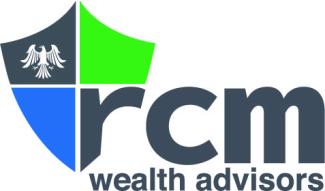RCM Managed Asset Portfolio - Q3 2020
RCM Managed Asset Portfolio - Q3 2020
RCM Managed Asset Portfolio
By Christopher Chiu, CFA
Time For Optimism
In past articles I have discussed economic cycles and the parts of the economic cycle that are unfavorable for equity and bond markets. We are now likely in the early parts of a new economic cycle in which conditions are improving and there will be a sustained economic recovery for at least the next several years. These are conditions that will be favorable for equities.
Here are some examples which illustrate my point. The first is a chart I have used before, the industrial production index, which begins to dip heading into every recession (gray time periods). By the time industrial production has bottomed we have begun to climb out of one.
If the latest dip on the chart is any indication, we are already recovering and close to being out of this current recession. Even If the affects are still being felt by workers and businesses, the direction for improvement is clear. This is an index that generally moves in only one direction once a new economic cycle begins and it does not often reverse course until the cycle is finished. Of course, what is preventing us from reaching full industrial capacity right now is the ongoing pandemic. But even through the pandemic, industrial production continues to improve. And as this problem slowly resolves, you can expect industrial production to once again begin approaching full capacity.
The second example which foretells better economic conditions ahead is that we are likely past peak unemployment. This past April unemployment reached 14.7%, which was even greater than the great financial recession of 2008. And yet the period right after 2008, when unemployment was at its highest, was a very favorable time to invest in equities. It was a period not without its hiccups because growth was slow and sputtering. But what was remarkable about that economic cycle was that it lasted for such a long time, nearly twelve years, the longest period of economic expansion in modern American history.
The time period after 2008 was a very favorable time period for investments primarily because unemployment had gone up to such high levels that it took a long time to come down and for employment to improve. Since labor, capital, and productivity[1] are the main factors that create growth, the huge number of unemployed meant there was a constant supply of labor to be brought back to work during the course of the decade. Labor was available to consistently boost GDP growth whenever it began to lag.
This phenomenon plays out in every economic cycle but to varying degrees of effectiveness, depending on how bad unemployment is at the start of the cycle. For example, during this last economic cycle (2009-2019) when unemployment started off very high, the S&P gained 246% compared with only 55% during 2003-2007, the previous economic cycle. As seen in the chart above, one reason for this large difference is that at the start of 2003 the unemployment rate really wasn’t that high and it really didn’t have far to fall; and when it did fall, it really didn’t fall that much. The cycle therefore only lasted five years. Contrast this with the 1980s, another long period for economic growth and another long bull market period for stocks. Here again, the unemployment rate was exceedingly high when the country was coming out of a recession in 1982 and had almost a decade to come down. The S&P gained 161% from 1982 to 1990.
|
Period |
Unemployment High Low |
Difference |
S&P 500 Performance During the Period |
Average Performance per Year |
|
1982-1990 |
10.8 5.0 |
5.8 |
161% |
11.2% |
|
1991-2000 |
7.7 3.8 |
3.9 |
313% |
15.2% |
|
2003-2007 |
6.3 4.4 |
1.9 |
55% |
9.2% |
|
2009-2019 |
10.0 3.5 |
6.5 |
246% |
11.9% |
I would note that in the four periods shown, successful investment periods have involved both Republican and Democratic administrations and in half the cases (1991-2000 & 2009-19) the economic cycle occurred under both Republican and Democratic administrations, my point being that while different fiscal policies (such as tax policies, government spending, or balanced budgets) may directly encourage or discourage investments, this small sample suggests the largest factors that create investment wealth are simply the ones that encourage the fullest possible employment for the longest time period because these prolong the economic cycle and with it favorable investment conditions. Generally, the bigger the difference in the unemployment rate from the start of an economic cycle to its end, the better the investment performance.[2] In the end, it really is just “the economy, stupid.”[3]
We are now set up for a similar situation at the start of this economic cycle as we had in 2008 and 1982 when unemployment was exceedingly high (see our current peak) and had a long runway to come down. (See chart.) This bodes well for a long period of sustained GDP growth and with it favorable conditions for investing in equities. It may seem strange to say this given all the economic uncertainties of the past few months, but the positive parts of the economic cycles start again and again throughout history beginning in the most unpleasant circumstances.
One final point, the economic cycle and the stock market usually begins to grow old when unemployment is around 5% or below, at which point the economy usually runs into a recession because there isn’t any more slack in the economy. There’s nothing left to improve. This is where we were last year and I warned that we were at risk of going into a recession, taking the equity market with it. (See chart.) The positive news for equity investors today is that it will be a long time until we get under 5% unemployment again, since current unemployment is at such historically high levels.
Valuation of the Equity Market
It goes without saying that almost every asset class has done well since the recovery began in late Spring. For many it will not feel like a recovery is occurring because so much negative data has yet to work its way through the system. The positive performance among bonds includes all credit levels. Among stocks, technology stocks have done the best but recently the transports have done just as well. And the performance of the transports, if anything, shows that normal levels of commerce are returning. The only laggards have been cyclical stocks such as financials, energy, and pandemic related sectors such as travel. I would expect financials to continue to do poorly, so long as rates remain low for a prolonged period of time.
Having said all this, is the market too expensive? Many people have said that we are currently in a bubble. It may be. (But it has come back a bit as I write this.) And as I value individual companies I find some companies are way overvalued while many companies remain undervalued. The market indices just reflect an average of both extremes.
But even if markets were to sell off, they would likely recovery within half a year or less, and then go on to exceed previous levels. This is primarily because the conditions I listed above are so favorable for growth. Again it may not seem that way for many but you simply have to look at the historical data and how the economy has performed in the past having already fared the worst.
[1] This approach to analyzing growth comes from the Cobb-Douglas production function and differs from the expenditure approach commonly used by market economists to estimate GDP.
[2] The exception is the 1991-2000 economic cycle when unemployment from peak to trough fell only 3.9% and yet S&P returns were 313% for the period! Greenspan attributed this extraordinary period of growth not only to full employment but also to productivity gains from the introduction and adoption of new technologies such as the PC and the Internet. So this was a period when two factors of the Cobb-Douglas function were at work.
[3] This quote, uttered by James Carville during the 1992 Presidential campaign in order to get his candidate to focus his message, seems apt for investments as well: a growing economy is the most important condition for investment performance.

